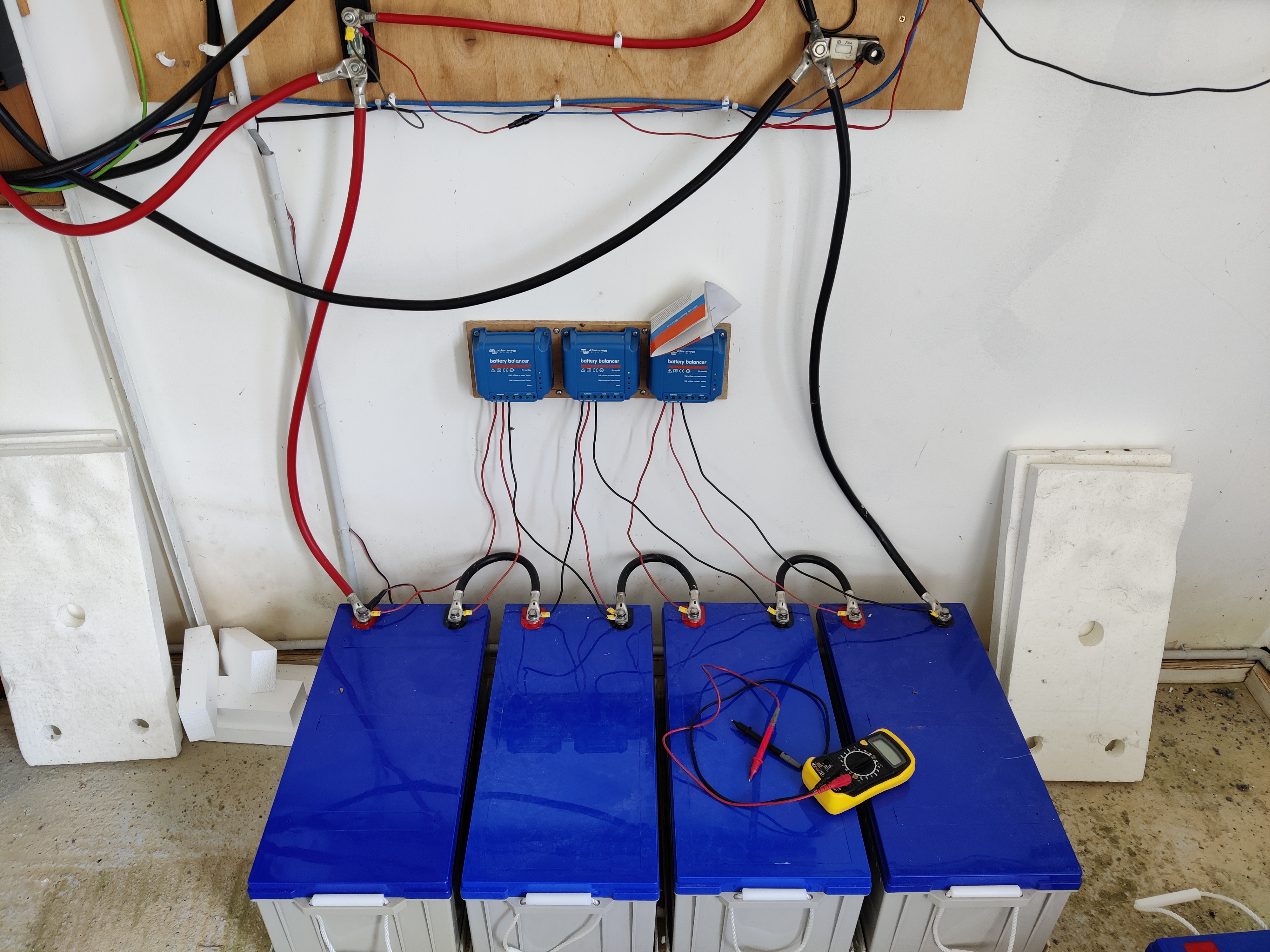ESS system based in the south of France.
- MultiPlus-II 48/5000/70-48
- BlueSolar Charger MPPT 150/70 (VE.Direct)
- Color Control GX
- 4x 12v AGM batteries totalling 200Ah with Victron battery balancers between
This is how it has all been wired up:


For some reason the system barely utilizes the batteries. I have configured it to go down to 65% soc, but it doesn't get below 90%.
When a substantial load is put on the system, it looks like it uses the battery for a short period, with the low battery led flashing, and then it switches to the grid fully with the low battery led full red. Then after a short time it seems to try again, and repeat. Which means the battery is almost never utilized to supplement the power usage.
Does this mean the batteries are dead? They are quite new so that would be strange and quite expensive (again)... Or is there some other possible reason for this behaviour?
